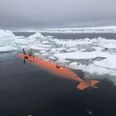‘We have made the planet inhospitable to human life’
A new study has concluded that rainwater anywhere in the world is now too toxic for humans to drink.
Researchers discovered high levels of man-made toxic ‘forever’ chemicals, known as perfluoroalkyl and polyfluoroalkyl substances (PFAS), in rainwater across the globe.
These chemicals are used in packaging, cosmetics such as shampoo, and waterproof fabrics. But over the years they have spread into our natural environment – including the rain.
Exposure to PFAS has previously been linked to health problems including fertility issues, higher cholesterol levels and certain types of cancer.
Research has also found that PFAS can affect how well vaccines work on children.
The levels of PFAS in the environment are roughly the same as they were 20 years ago, but the levels found in humans have declined massively over the same period as we’ve become more aware of the risks they pose.
The study, titled ‘Outside the Safe Operating Space of a New Planetary Boundary for Per- and Polyfluoroalkyl Substances (PFAS)’, was published in Environmental Science and Technology and was led by Stockholm University professor Ian Cousins.
He told AFP: “There is nowhere on Earth where the rain would be safe to drink, according to the measurements that we have taken.
“We have made the planet inhospitable to human life by irreversibly contaminating it now so that nothing is clean anymore. And to the point that’s it’s not clean enough to be safe.”
In the Antarctic and the Tibetan Plateau, scientists found PFAS at 14 times higher than the levels the US Environmental Protection Agency considers safe.
Cousins said we have “crossed a planetary boundary,” referring to a theory that measures the planet’s capacity to absorb and deal with the impact of human activity.
According to Cousins, PFAS are so prevalent in the environment that they will never disappear and we are simply going to “have to live with it.”
He added: “But it’s not a great situation to be in, where we’ve contaminated the environment to the point where background exposure is not really safe.”
Related links:
- Liverpool manager Jurgen Klopp compares fixture congestion response to climate change
- Don’t Look Up: Tory leadership candidates rip up climate pledges as Britain bakes in the heat
- A Geek Tragedy: How the rise of single-use vapes created an environmental crisis





















































